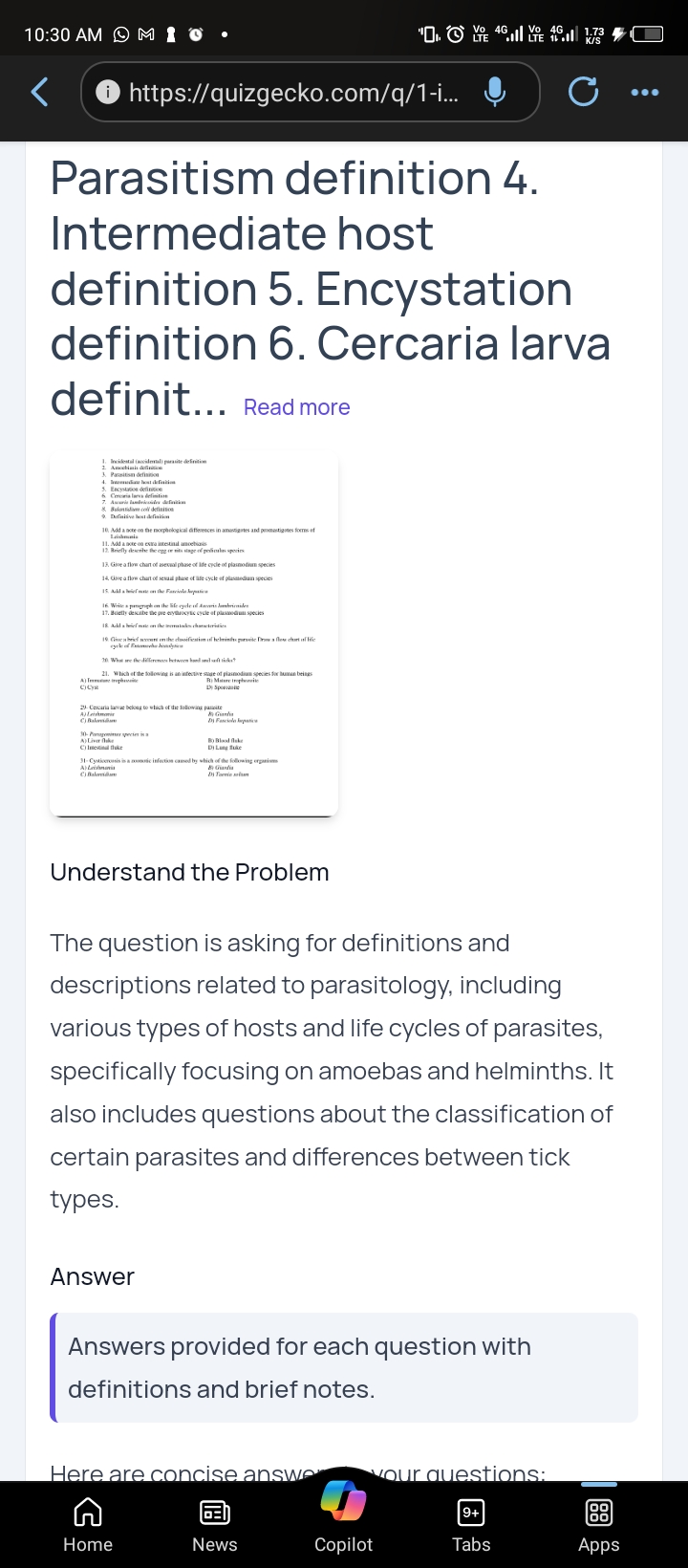Definitions and descriptions related to parasitism, intermediate hosts, encystation, cercaria larva, and related concepts in parasitology.

Understand the Problem
The question is asking for definitions and descriptions related to parasitology, including various types of hosts and the life cycles of parasites, specifically focusing on amoebas and helminths. It also includes questions about the classification of certain parasites and differences between tick types.
Answer
Parasitism: Harmful relationship; Intermediate host: Larval development; Encystation: Forming cyst; Cercaria larva: Free-swimming trematode stage.
Definitions:
- Parasitism: A relationship where the parasite lives in or on another organism, causing harm.
- Intermediate host: The host in which the parasite undergoes asexual reproduction or larval development.
- Encystation: The formation of a protective cyst.
- Cercaria larva: A free-swimming, tailed larval stage of trematodes.
Answer for screen readers
Definitions:
- Parasitism: A relationship where the parasite lives in or on another organism, causing harm.
- Intermediate host: The host in which the parasite undergoes asexual reproduction or larval development.
- Encystation: The formation of a protective cyst.
- Cercaria larva: A free-swimming, tailed larval stage of trematodes.
More Information
Parasitism involves organisms where one benefits at the expense of the other. Cercariae are crucial in the transmission of trematodes.
Tips
Confusing intermediate host with a definitive host is common; ensure understanding of where reproduction stages occur.
Sources
- Parasitology Glossary - USF Health - health.usf.edu
- Parasitic disease - Life Cycles, Hosts, Prevention - Britannica - britannica.com
- Incidental parasite definition - Quizgecko - quizgecko.com
AI-generated content may contain errors. Please verify critical information